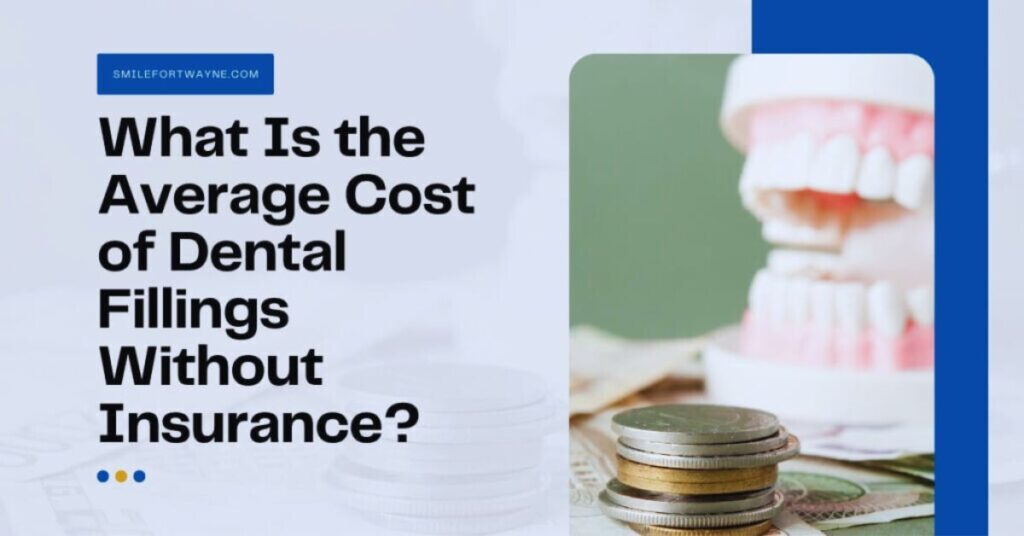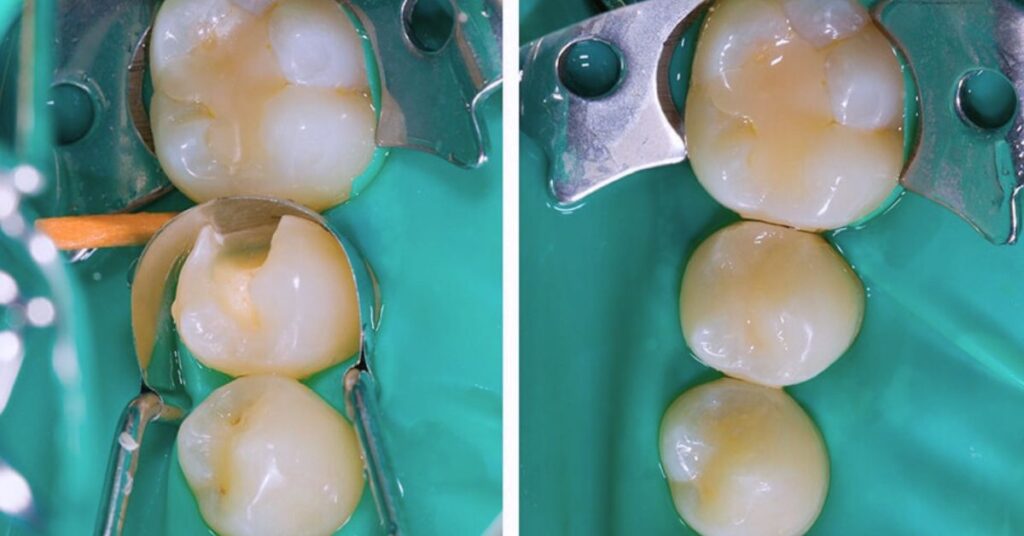How Much is a Filling Without Insurance: A dental filling without insurance typically costs between $100 and $300. The price depends on the material used and the tooth’s location.
Dental health is crucial for overall well-being, but many people face financial barriers. Understanding the cost of dental procedures, especially fillings, is essential. Without insurance, the price can vary significantly. Factors like the filling material and the tooth’s position in the mouth influence the cost.
Common materials include amalgam, composite resin, and gold, each with its price range. Researching and comparing prices at different dental clinics can help you find affordable options. Maintaining good oral hygiene can also reduce the need for costly dental treatments. Regular check-ups and cleanings are essential for preventing cavities and minimizing dental expenses.
Table of Contents
Cost Of Dental Fillings
Understanding the cost of dental fillings is important for your budget. Dental fillings fix cavities and prevent further tooth damage. Knowing the costs helps you plan better.
Average Prices
The cost of dental fillings varies. On average, you can expect to pay:
- Amalgam Fillings: $50 to $150
- Composite Fillings: $90 to $250
- Gold Fillings: $250 to $4,500
- Ceramic Fillings: $250 to $4,500
These prices are for fillings without insurance. Insurance could lower these costs.
Factors Influencing Costs
Several factors influence the cost of dental fillings:
- Material Used: Gold and ceramic are more expensive.
- Size of Cavity: Larger cavities cost more to fill.
- Location of Tooth: Molars may cost more than front teeth.
- Dental Office Location: Urban areas may have higher costs.
- Dentist’s Experience: Experienced dentists may charge more.
Knowing these factors helps you understand the price differences. Choose the best option for your needs and budget.

Types Of Dental Fillings
Dental fillings are used to restore damaged teeth. Different materials can be used for fillings. Each type has its pros and cons. Knowing the types helps you choose the best one.
Amalgam Fillings
Amalgam fillings are made from a mix of metals. These include silver, mercury, tin, and copper. They are very strong and durable. Amalgam fillings can last for many years.
Amalgam fillings are also less expensive. They are a good choice for back teeth. This is because back teeth need to handle more pressure. But, they are silver in color. This can make them noticeable when you smile.
| Pros | Cons |
|---|---|
| Strong and durable | Silver color |
| Less expensive | Contains mercury |
Composite Fillings
Composite fillings are made of resin and plastic. They can be colored to match your teeth. This makes them less noticeable. Composite fillings are great for front teeth.
They bond directly to the tooth. This makes the tooth stronger. But, composite fillings are not as durable as amalgam. They can wear down over time. Also, they are more expensive than amalgam fillings.
| Pros | Cons |
|---|---|
| Tooth-colored | Less durable |
| Bonds to tooth | More expensive |
Payment Plans
Paying for a dental filling without insurance can be tough. Payment plans can help manage the cost. There are several options available.
In-house Financing
Many dental offices offer in-house financing. This allows you to pay in installments. In-house financing often comes with zero or low interest.
- No credit check required
- Flexible payment terms
- No third-party involvement
Speak to your dentist about in-house financing options. They can tailor a plan to fit your budget.
Third-party Financing
Third-party financing is another option. Companies like CareCredit and LendingClub offer dental loans.
| Provider | Interest Rate | Payment Terms |
|---|---|---|
| CareCredit | 0% for 6-24 months | Up to 60 months |
| LendingClub | Varies by credit score | Up to 84 months |
These providers often have simple application processes. Approval can be instant, letting you start treatment right away.

Low-cost Dental Clinics
Finding affordable dental care can be tough without insurance. Low-cost dental clinics offer a solution. These clinics provide quality care at reduced prices. Let’s explore some options you have.
Community Health Centers
Community Health Centers serve people with low incomes. They offer dental services at reduced costs. These centers provide a range of treatments. You can get cleanings, fillings, and even extractions. They have skilled dentists who ensure quality care.
Community Health Centers are often funded by the government. This allows them to charge less for their services. Here is a table showing average costs for dental services at these centers:
| Service | Average Cost |
|---|---|
| Cleaning | $50 |
| Filling | $75 |
| Extraction | $100 |
To find a Community Health Center near you, visit the Health Resources and Services Administration website.
Dental Schools
Dental schools are another great option for low-cost dental care. These schools train future dentists. Students perform dental work under supervision. This ensures you receive quality care at lower prices.
At dental schools, you can get many services. These include cleanings, fillings, and even root canals. Here are some average costs you might expect:
- Cleaning: $30
- Filling: $50
- Root Canal: $200
Dental schools offer affordable care. They also provide a learning experience for students. Check the American Dental Association website to find a dental school near you.
Government Assistance Programs
Many people worry about the cost of dental fillings without insurance. Government assistance programs can help. These programs offer financial support for dental care. Let’s explore two main programs: Medicaid and CHIP.
Medicaid
Medicaid is a state and federal program. It helps low-income families. Medicaid often covers dental fillings. Each state has different rules. Some states cover more dental services. Check your state’s Medicaid program. You may qualify for free or low-cost dental care.
Chip
The Children’s Health Insurance Program (CHIP) helps children. It provides health coverage for kids in low-income families. CHIP often includes dental care. This can cover fillings for children. Each state runs its own CHIP program. Check if your child qualifies. CHIP can make dental care affordable.
| Program | Who it Helps | What it Covers |
|---|---|---|
| Medicaid | Low-income families | May cover dental fillings |
| CHIP | Children in low-income families | Often covers dental fillings |
- Medicaid can help with dental costs.
- CHIP covers dental care for children.

Preventive Measures
Preventive measures can help avoid the high cost of dental fillings. By following a few simple steps, you can maintain healthy teeth and reduce the risk of cavities. This can save you money and keep your smile bright.
Regular Check-ups
Regular dental check-ups are crucial. Dentists can spot problems early. Early treatment often costs less. Schedule a check-up every six months. This helps to catch cavities before they worsen. Regular visits also include professional cleanings. Cleanings remove plaque and tartar that brushing misses. This keeps your teeth healthy and strong.
Proper Oral Hygiene
Proper oral hygiene starts at home. Brush your teeth twice a day. Use fluoride toothpaste to strengthen enamel. Don’t forget to floss daily. Flossing removes food particles between teeth. This prevents plaque build-up and cavities.
- Brush for two minutes each time.
- Replace your toothbrush every three months.
- Use mouthwash to kill bacteria.
Eating healthy also helps. Avoid sugary snacks and drinks. Sugar feeds bacteria that cause cavities. Drink plenty of water to wash away food particles. Choose foods that support dental health, like cheese and leafy greens.
| Preventive Measure | Benefit |
|---|---|
| Regular Check-Ups | Early detection and treatment of dental issues |
| Proper Oral Hygiene | Prevents plaque build-up and cavities |
| Healthy Diet | Supports strong teeth and gums |
By following these preventive measures, you can reduce the cost of dental fillings. Keep your teeth healthy and your wallet happy!
Frequently Asked Questions
How Much Does A Filling Cost Without Insurance?
The cost of a filling without insurance ranges from $150 to $400.
Does The Type Of Filling Affect Cost?
Yes, composite fillings are typically more expensive than amalgam fillings.
Can The Dentist’s Location Influence Filling Cost?
Absolutely, urban areas usually have higher dental costs compared to rural areas.
Are There Any Payment Plans Available?
Many dentists offer payment plans to make the cost more manageable.
Is It Cheaper To Get Fillings Abroad?
Often, dental treatments are cheaper abroad, but consider travel costs and quality.
Conclusion
Understanding the cost of fillings without insurance helps you budget effectively. Prices vary based on material and location. Comparing dentists can save money. Prioritize dental health to avoid costly procedures. Regular check-ups and good oral hygiene are essential. Stay informed and make wise financial decisions for your dental care.













Leave a Reply